
Für eine deutsche Übersetzung dieser Seite einfach die Brandenburger Flagge anklicken
 |
Click the Brandenburg Flag for a German translation Für eine deutsche Übersetzung dieser Seite einfach die Brandenburger Flagge anklicken |


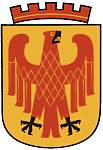 |
Home Towns - Potsdam, GermanyHavel Bay and Kiez |
 |



 |
This site is part of our Potsdam, Germany site. Click the left turn sign to get back to the
Potsdam Start Site.
 If you came here from our Vacation 2010 sites, click the green traffic light to return. |

|



|
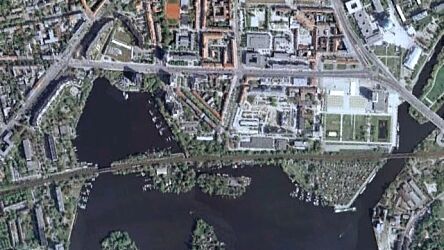 |
The New-Town Havel Bay (Neustädter
Havelbucht in German) is a small bight formed by river Havel. It separates the central part of town
from the western part around the Brandenburg Gate. Fishermen used the bay since the 1300s. In 1349, a village at the bight was mentined as "Kytz zu Potstamp." Kytz, or Kiez orignates from the Slavonic word chyza, meaning hut or house. The Kietz remained an independent settlement until 1722.  The bay used to extend much further north, but after World War II, between 1953 and 1973, the northern part of the bay was filled up with rubble from war-ruins and one of Potsdams largest streets, the Breite Straße (Wide Street) was finally extended into the western parts of town. Satellite image of Havel Bay. |

 |
 |

|
| Until the Kiez was incorporated in 1722, this part of town was outside the city wall. Remains of the wall can be seen at Louise Square. The building in the picture above used to be the customs house. Today, it is a restaurant. |


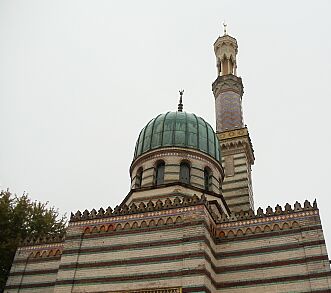 |
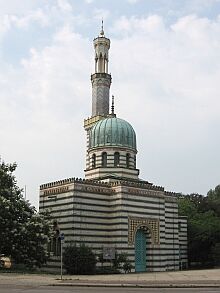 |
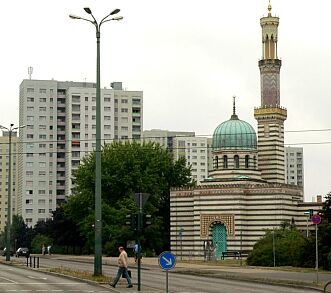
|
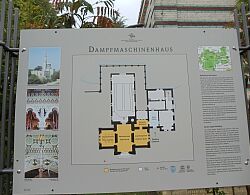 |
The most prominent building at the bay is without a doubt "The Mosque." This building looks like a Moorish mosque, but it actually is a pump
station in disguise. The water for the fountains in town is pumped from river Havel to Louise Square and all the way to Sanssouci Park using
a pump inside the "Mosque." We were there at the wrong time to take a tour and it seems almost impossible to find pictures of the inside anywhere. The picture to the right is borrowed from the newspaper "Märkische Allgemeine". |
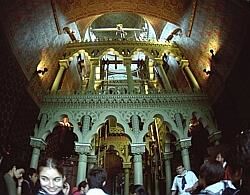
|

| The fountains in Sanssouci park were originally designed by Prussian King Frederick the Great in 1750. Back then, the pumps were supposed to be driven by windmills, but the plan never took off and was finally cancelled in 1780. It took another 60 years and the worldwide triumph of the steam engine to pump the water from the river up the hill. In 1842, Germany's strongest steam engine (82 Horse Power) drove Germany's tallest fountain, the 125 feet high main fountain in Sanssouci Park - a true demonstration of Prussia's technological superiority at the time. |
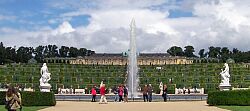 |
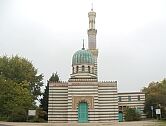 |
The Steam Pump House was built between 1841-1843 upon request of King
Frederick Wilhelm IV.
The King's architect, Ludwig Persius always
had a fondness for oriental architecture. When the King asked him to design the pump station "in the style of a Turkish Mosque with
a minaret disguising the funnel," Persius didn't hold back. There are other examples of steam engines disguises as mosques in Germany (probably because the huge funnels were best covered by a minaret), but this one stands out as the best example ad as the only building in Potsdam in Moorish style. It is still in use today; only the steam engine and the centrifugal advance mechanism have been replaced by an electrical pump and a micro processor. |

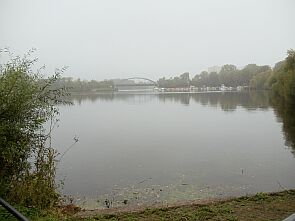 |
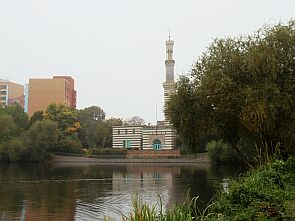 |

|
 |
It was a foggy day in fall when we visited the bay, but it was still nice, especially in the Cherry Garden! (below left)  To celebrate German unification, the Japanese TV network Asahi collected donations of cherry trees from Japanese citizens and had them planted in Potsdam in 1991. The plaque reads,  Nobody is a stranger under the branches of a blossoming cherry tree.  Right next to the Cherry Garden is the restaurant Water Lily. It was designed in 1983 by architect Ulrich Müther. The restaurant is a pleasant relief from the usual concrete slab architectur around here. |
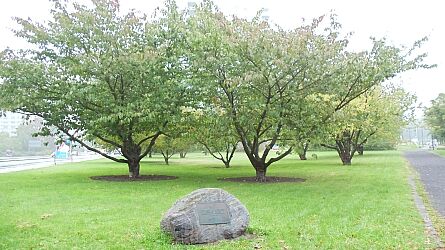 |
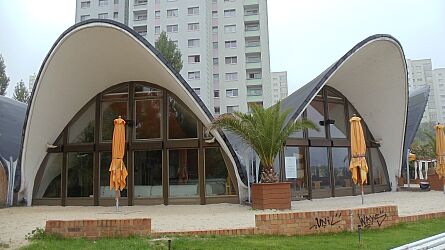
|


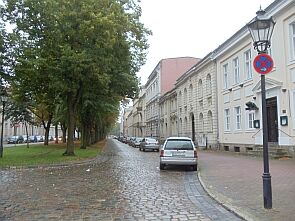 |
 |
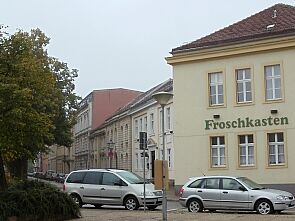
|
 |
And then, there is "The Kiez." First mentioned in 1349 as a Slavonic fishing village, it remained an independent settlement until 1722. Today,
all that is left is the name Kiez-Street. The picture to the left shows a replica of a fishing village at around 1300.  The three pictures below are borrowed from Architectura Pro Homine. |
 |
 |

|


 |
This site is part of our Potsdam, Germany site. Click the left turn sign to get back to the
Potsdam Start Site.
 If you came here from our Vacation 2010 sites, click the green traffic light to return. |

|

 Back to Potsdam Page |
 Back to Home Towns |
 Back to Germany Page |
 Back to English Main Page |
 Back to Start Page |